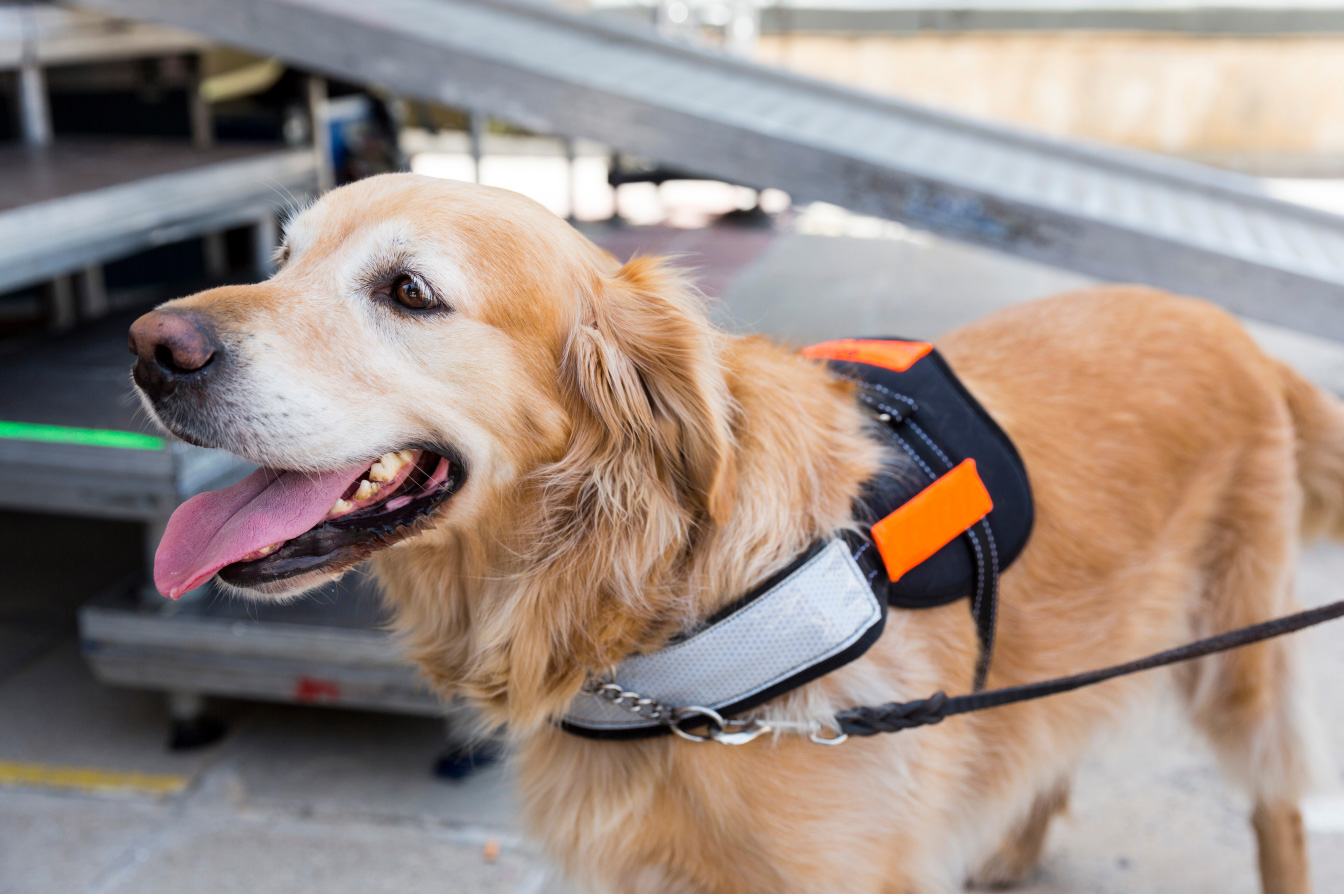
5 amazing jobs that dogs can do if yours needs to start pulling its weight
Share this article with your dog
By Abbie Kopf
October 13, 2023
Dogs are not considered the smartest domesticated animals (aw), but they are considered the most pro-social. Studies have found that dogs pick up human cues almost instantaneously, such as pointing at things. Technically smarter animals — like chimpanzees — may be trained to care about human gestures, but don’t do so intuitively. (And cats probably just don’t care.)
In fact, dogs have been helping us for a long time thanks to their ability to read and respond to human needs. Trained service animals provide vital functions for hundreds of thousands of people in the U.S. who have mental and physical disabilities. Law enforcement and the military use dogs for a wide variety of purposes — some bomb sniffing dogs even have baseball cards.
Still, canines continuously expand their resumes. Here are five amazing jobs that you can look into if your pet isn’t contributing to your household coffers.
Bed bug detection
Bed bugs are a pernicious problem because these tiny pests are hard to spot until there are symptoms – like itchy bites. Dogs’ gold-level sense of smell allows them to detect bed bugs at the earliest stages of development and will alert humans to places where bed bugs hide that you might miss with sight alone — like behind wallpaper, for instance. Trained K9s sniff out areas with bed bugs and alert their pest control technician, a team which is more effective than humans inspectors alone.
Search and rescue
Search and rescue (SAR) dogs represent the top 1% of all service animals, making them an elite force. When a person or piece of evidence goes missing, SAR dogs can smell a human scent for around two to three hours after it has last been touched, and sometimes even longer than that. Amazingly, dogs can also tell when an item smells like it doesn’t belong. While looking for items left behind by a lost hiker, for instance, dogs may be able to tell if an item is an out-of-place scent in nature.
Senior assistance
As people age, it’s common to develop issues with seeing, hearing, mobility and numerous unique conditions that require care. Dogs are already stepping in to play an important role in caregiving for seniors — who will soon become the largest demographic in the U.S. For people who use wheelchairs, dogs can help open doors or lower cabinets. Service animals can get help if a person has experienced a fall or a seizure. These amazing companions can even help people who have memory loss issues to dress and eat.
Livestock protection
These special security guards help protect livestock from a variety of natural predators. Unlike herding dogs, Livestock Guardian Dogs (LGDs) essentially live with their herds, imprinting as an honorary member of the pack. Though these dogs are typically large and independent — making them less popular in city settings — some people use them to guard residential chicken coops. Though LGDs are fierce toward outside threats, they are often gentle with children and other pets.
Allergy detection
About 1 in 50 Americans experience life-threatening allergies that include severe reactions that can prove fatal without timely, proper care. What makes allergy detecting dogs so special is that they must sort through an enormous number of smells to zero in on an allergen like peanuts, shellfish, soy or gluten. Allergen Service Dogs will alert to the smell of a dangerous ingredient with some sign like pawing. Or, they can be used to clear entire areas, searching high and low for the presence of a life-threatening allergen.
Researchers are continuously studying dog cognition to better understand how they can be helpful to our everyday lives, but one thing is certain: They really are our best friends.
If you want to learn more about your pet and how they can enrich your everyday life in your home or apartment, subscribe to Localite emails.
Share this article

What’s behind the fiercely raging pickleball controversy
A briefer on both sides of the mega-trend
Pickleball has once again claimed the title of the fastest-growing sport in America. If you’re unfamiliar with the ins and outs of the game, pickleball combines elements of tennis, badminton and ping-pong. The rules are simple and the dimensions of a standard pickleball court are compact, creating a low-impact, high-reward activity that is accessible to most people. In fact, the sport has been hugely popular with the 55+ crowd for years, with senior living communities promoting it as a draw for residents who want to stay active. (The Villages in Florida boast hundreds of pickleball courts.)
In the past few years, though, pickleball’s popularity has surged among people of all ages and activity levels in cities across the country, contributing to a 171% increase in participation. Not everyone is thrilled. The NY Post claims the sport is “wreaking havoc” in cities across the U.S., with lawsuits, scuffles and noise complaints owing to its controversial status. Despite this, the game continues to draw enthusiasts (and fanatics) to new and existing courts in the country. Here is the lowdown on both sides of the pickleball debate.
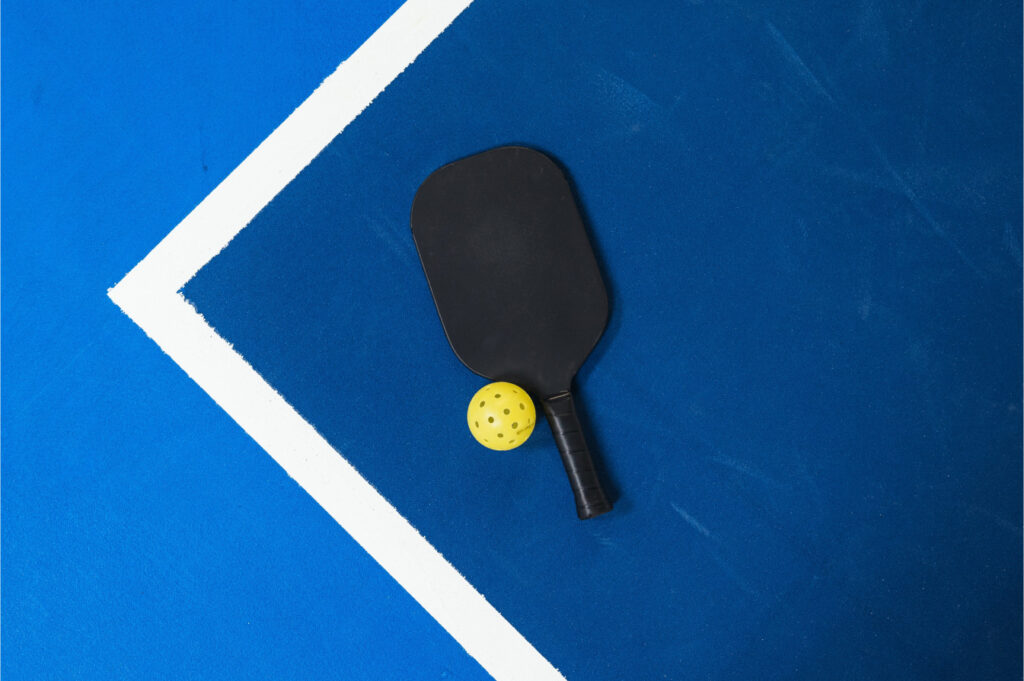
In this corner: pickleball haters
If you have played a game of pickleball, you likely know that it can be a bit noisy. The sport uses solid paddles to hit a plastic ball with holes, creating a pop-pop back-and-forth that produces a decibel level that’s roughly twice as loud as tennis and a bit louder than city noise. In fact, the pitch simulates the sound of a garbage truck.
It isn’t just the mechanics. Pickleball lends well to social activity, able to be played in twos or fours and, because it is active without being overly toilsome, can be played with groups of friends – maybe even alongside a few brews. The joviality isn’t always welcome when played late at night or in otherwise serene neighborhoods.
The courts themselves are another contentious component. Tennis courts, where picklers often play, generally have spoken and unspoken rules of etiquette. For instance, it’s not unusual for tennis players to stay on the court for roughly an hour before yielding it to waiting players in the stands. Not all picklers are aware of – or abide by – the rules. And, most pickleball courts are converted from tennis courts, meaning that tennis players have fewer places to practice and play.
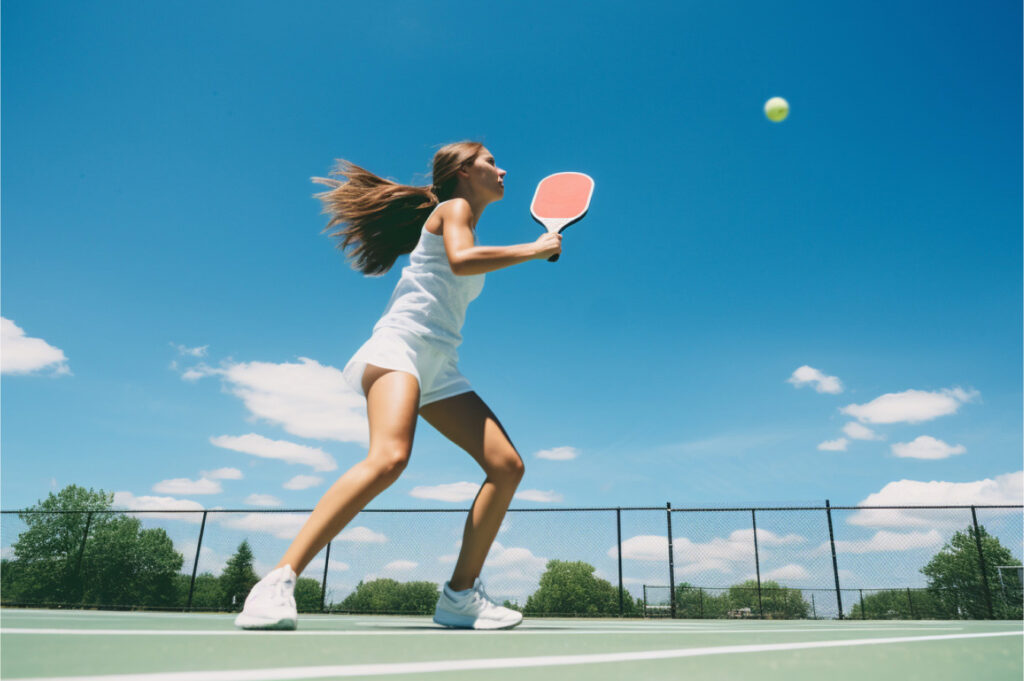
And in this corner: pickleball advocates
Ask a pickler why they like the sport, and they may exuberantly rattle off a list of reasons. For some, it’s a way to stay active, meet new people and become a part of a movement that has a low bar for entry. But it isn’t just fun.
Experts extol the many benefits of pickleball, like improved hand-eye coordination and improved physical health when played consistently. Even the noise-inducing rackets and holed balls make swinging a pickleball racket easier on arm joints, which can help people who may be prone to tendonitis or other overuse injuries. And, for players who use a wheelchair or other adaptive devices, governing organizations like USA Pickleball have ensured greater accessibility for more players through official recommendations and rules for play.
Additionally, as the sport gains in popularity, independent pickleball courts are being erected so that players aren’t commandeering tennis courts. Concepts like Chicken N Pickle, which has locations in Texas, Arizona, Kansas and Oklahoma – with new locations on the way – offer patrons the opportunity to enjoy a good meal, reserve a court and watch the picklers in action. Places like Pickle and Social offer locations in Georgia and Arizona to enjoy a club-like experience, offering a full-service bar, specialty drinks and more to enjoy after a lively match.
There’s also a matter of supply and demand in the increasingly heated wars between tennis players and picklers. Tennis has only grown in popularity by about 4% over the past few years, and picklers argue that many courts were underused and are now being fully utilized thanks to pickleball.
So, what’s the verdict?
Whether you love, hate or remain undecided on the sport of pickleball, it’s best to read up on pickleball and tennis court etiquette before playing. If you want to participate, make sure that your destination is properly zoned and accommodating of picklers to ensure that everyone – players, spectators and bystanders alike – can enjoy their lives (and their game).
Want to learn more about the trends that dominate the local scene where you live? Sign up for the Localite newsletter.
Share this article

The 3 best-reviewed white-noise machine brands
We combed through multiple roundups and found clear winners in the white-noise game
From apps to standalone devices, there is an ever-growing list of options to combat noise pollution that interferes with a good night’s rest. It can be difficult to narrow down your perfect noise-neutralizer, so we’ve done the work to find a clear consensus on winning brands. We evaluated the choices from sources1 who score sound machines by rigorous testing and user reviews to find the most innovative, effective, user-friendly options on the market.
Before we dig in, make sure to note which of these machines offer the kinds of sound you want. In general, there are three kinds of noise that help drown out sound:
- White noise: Classic white noise combines all frequencies and may sound like a hair dryer, fan, heater, etc.
- Pink noise: In these soundscapes, higher frequencies are not as loud and are more akin to rainfall or rivers.
- Brown noise: These sounds feature lower frequencies — think rolling thunder, for instance.
Whatever your favorite kind of distraction, there are noise machines that can accommodate your needs. Here are the top three brands, according to the experts.
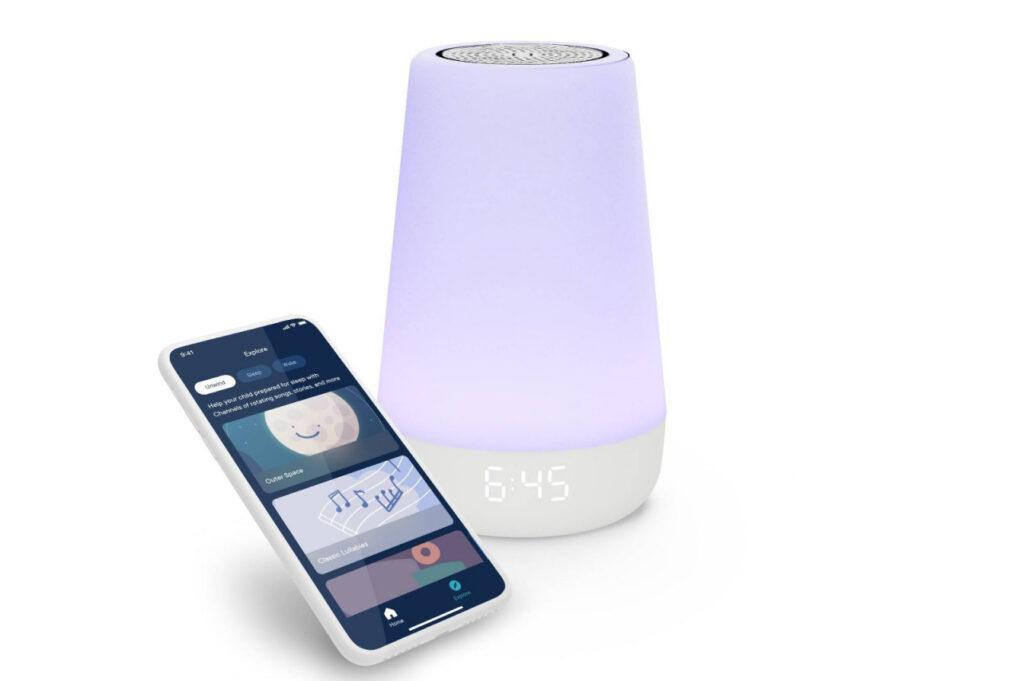
Hatch: mentioned in 80% of “top” lists
The Hatch product suite provides a comprehensive calming, noise-reducing experience for adults, kids and babies, each with a charming minimalistic design. Hatch bills its product for adults, the Restore 1, as a sleep assistant, providing a “sound machine, sunrise alarm, smart light, meditation app and an alarm clock” in its dreamy orb. Though it mainly utilizes pink noise, you can access curated rest and relaxation content and mixes on the app. The Rest 2nd Gen is a noise machine, night-light and “dream machine” with lights and music that act as cues to help establish consistent sleep schedules for kids and babies. Parents can pick from a variety of sounds — from lullabies to gentle waves — to help make nighttime feel magical for little ones.
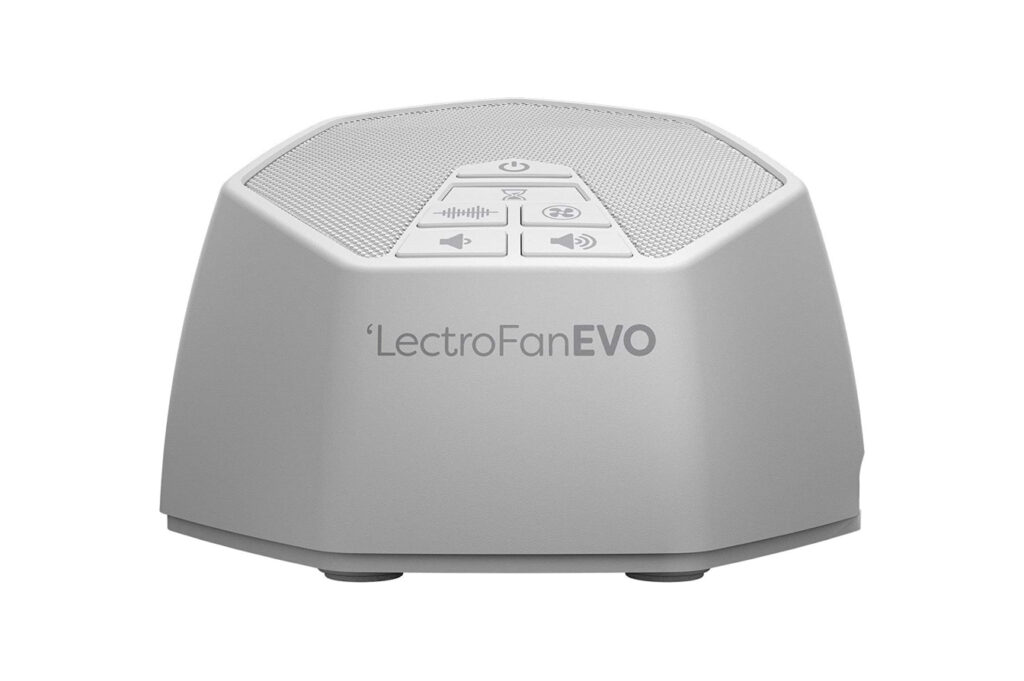
Adaptive Sound Technologies, Inc. (LectroFan and Sound + Sleep)
Adaptive Sound Technologies develops and distributes some of the best-reviewed sound machines, including two that made almost every “best-of” list we evaluated.
LectroFan: mentioned in 70% “top” lists
The LectroFan Classic is a simple, sleek option that’s simple but effective. The machine only offers 20 sounds —10 fan sounds and 10 pure white-noise sounds. The noises range from as quiet as a whisper to louder than an industrial fan, according to the website. The LectroFan Evo is another well-regarded choice, with 22 non-repeating brown, pink and white noise options, and is slightly lighter and smaller than the Classic.
Sound + Sleep: mentioned in 50% of “top” lists
The company claims the Sound + Sleep is “scientifically engineered” to lead to better rest and relaxation, and users seem to agree. The high-fidelity speaker makes the Sound + Sleep models ideal for smooth, high-quality sound production. The premium Sound + Sleep SE offers more sound profiles and features an audio jack, so you can listen to your own music or wind down with sounds for restful zzz’s.
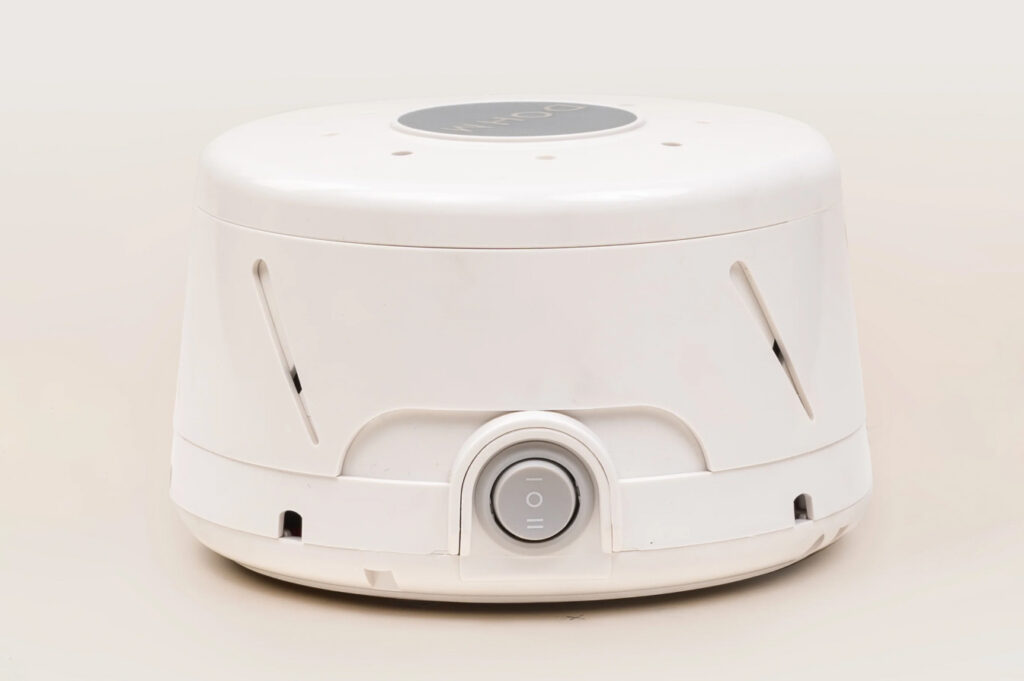
Yogasleep: Mentioned in 60% of “top” lists
Yogasleep provides multiple shopping options that allow you to select the right product by preferred noise or by use — whether you’re traveling, using it for a baby or even calming an anxious pet. Reviewers consistently cited the Dohm® Classic, which is aptly named. The machine was originally invented in 1962 and sticks to the same formula that has helped this brand become one of the most trusted names in sleep. Inside the Dohm, a real fan is whirring, and you can adjust the fan by tone and speed. This means that, unlike some machines, there are no sound resets that can jar you out of slumber. Yogasleep also features a more compact version, the Hushh®+, which includes more sounds and wireless charging when you’re on the go.
Want to learn more about tech that helps make life easier? Subscribe to the Localite newsletter.
Sources: Wirecutter, USA Today Reviewed, CNET, Good Housekeeping, CNN Underscored, Wired, The Strategist, NY Post, Forbes, PC Mag
Share this article


